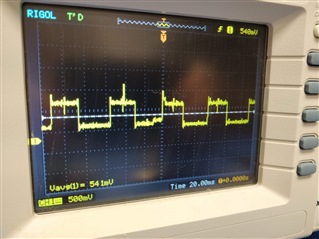Hello,
I am using mfw1.3.0 and NCS 1.7.0 developing an application on a custom board implementing the NRF9160 and NRF52820 (The 52820 is put into very low power using nrf_pwr_mgmt_shutdown(NRF_PWR_MGMT_SHUTDOWN_STAY_IN_SYSOFF);).
There is a state in the application where we would like the device to go into a deep sleep mode where the device ideally consumes <200uA of current (Lower is even better). The device is awoken by a state change on a configured Sense pin.
In the current stage of development, everything is working decently well with the modem powering off and then the device being set to deep sleep. The issue is that we are seeing around 900uA of average current draw (It seems to be fluctuating between about 500uA and 1200uA). I know some of this current is due to on-board peripheral parts drawing a bit of power but it really should only be accounting for around 150uA or so and is something we are working on separately.
I have read pretty much every post out there about low power mode on the NRF9160 and it seems that the first thing to check is if CONFIG_SERIAL is disabled in both the application config as well as the SPM config. Our application will be using serial but we want to shut it down before going into deepsleep with this function:



